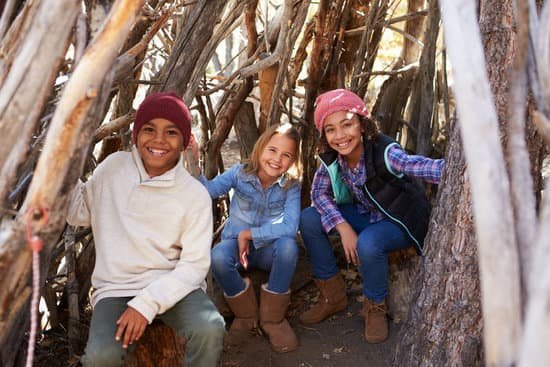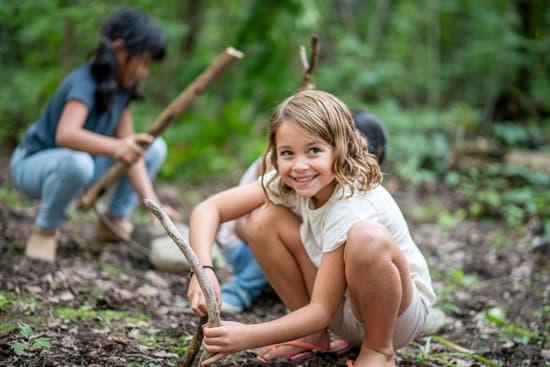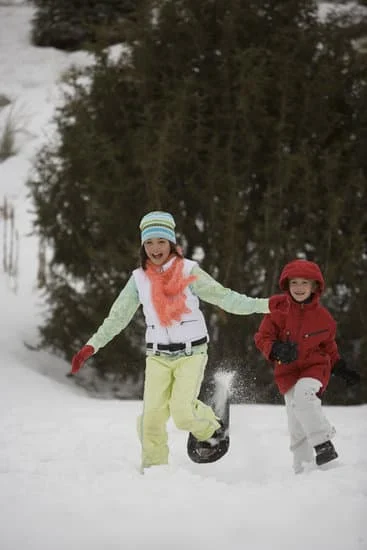Homes Sweet Homes (all seasons)
What living things are supported in our local habitats? What actions affect our habitats in a negative or positive way? Students will explore to observe what habitats they observed in their school yard or local green space. Students will also have an opportunity to create models of a habitat lived in by a local mammal or bird.
Curriculum Links
Grade Four
- interactions of humans on natural habitat
- identify reasons for depletion of plant and animal species
- provide an understanding of habitats as areas that provide plants and animals with necessities of life
- factors that affect the ability of plants and animals to survive in a specific habitat
- structural adaptations that allow plants and animals to survive

Instincts for Survival (all seasons, note that appropriate playing space is essential for this program)
The original game created by Waterloo outdoor educator Frank Glew, simulates the lives of herbivores, omnivores and carnivores in the forest. This active and exciting game is an excellent way to understand the concept of food webs and habitats.
Curriculum Links
Grade Four
- Identify reasons for depletion of plant and animal species
- build food chains
- demonstrate and understanding of food chains
- identify animals that are carnivores, omnivores and herbivores
- physical fitness through daily physical activity
Grade six
- benefits to humans of biodiversity
- understanding biodiversity
- biodiversity within communities
- physical fitness through daily physical activity

Bridge Building Workshop (indoor space necessary, all seasons)
This is a community building workshop that challenges the students to build the strongest bridge structure as a team. Emphasis on team support and communication will be focused upon as we debrief the structure building experience. Using bridge building as a metaphor, students will be asked how they can continue to build bridges within their class, school and community.
Curriculum Links
Grade Five
- Investigate how structures are built to withstand forces.
- explain how a person’s actions can affect the feelings, self-concept, emotional well-being, and reputation of themselves and others
Grade six
- communicate effectively, using verbal or non-verbal means, as appropriate, and interpret information accurately as they participate in physical activities, develop movement competence, and acquire knowledge and skills related to healthy living
- use a range of critical and creative thinking skills and processes to assist them in making connections, planning and setting goals, analyzing and solving problems, making decisions, and evaluating their choices in connection with learning in health and physical education
- apply personal skills and interpersonal skills (e.g., self-awareness and self-management skills, including anger management; communication skills, including listening skills and assertiveness skills) to promote positive interaction and avoid or manage conflict in social situations
Team Building Workshop (all seasons)
Using activity based challenges and debriefing techniques, students will be challenged to look at their personal leadership, communication and inclusive nature. What is my role within a group? How does a group work effectively? Team building games are a fun and creative way to enjoy the class community while looking into some of these questions.
Curriculum Links
Grade Five
- explain how a person’s actions can affect the feelings, self-concept, emotional well-being, and reputation of themselves and others
- physical fitness through daily physical activity
Grade six
- communicate effectively, using verbal or non-verbal means, as appropriate, and interpret information accurately as they participate in physical activities, develop movement competence, and acquire knowledge and skills related to healthy living
- use a range of critical and creative thinking skills and processes to assist them in making connections, planning and setting goals, analyzing and solving problems, making decisions, and evaluating their choices in connection with learning in health and physical education
- apply personal skills and interpersonal skills (e.g., self-awareness and self-management skills, including anger management; communication skills, including listening skills and assertiveness skills) to promote positive interaction and avoid or manage conflict in social situations
- physical fitness through daily physical activity


Renewable vs. Non-renewable Energy (fall and spring)
How do we heat our houses? Where does this energy come from and what are all of our options as Canadians who have one of the highest rates of energy consumption in the world? Using games and activities the students will explore the ideas of Renewable vs. Non-renewable energy sources and will even have an opportunity to cook using a renewable energy source. Yum!
Curriculum Links
Grade Five
- Issues of energy and conservation
- Evaluate the effects of various technologies on energy consumption
- Variety of forms of energy
- Identify renewable and nonrenewable sources of energy
- How is energy stored?
- Explain how the use of energy derived from fossil fuels changes the composition of the atmosphere and how these changes contribute to climate change
- Anaslyse long-term impacts of human uses of energy and natural resources on society and the environment, including climate change, and suggest ways to mitigate these impacts

The Outdoor World of Fibonacci (fall and spring are preferred)
Patterning in nature can be surprising and fascinating. By observing patterns in nature, the students will create a piece of art that reflects elements of the Fibonacci sequence and spiral. The beauty of patterning in nature will be the inspiration for some beautiful pieces of art.
Curriculum Links
Grade Six
- investigate organisms found in a specific habitat and classify them
- extend and create repeating patterns that result from rotations, through investigation using a variety of tools
- create two-dimensional, three-dimensional, and multimedia art works that explore feelings, ideas, and issues from a variety of points of view
- demonstrate an understanding of composition, using selected principles of design to create narrative art works or art works on a theme or topic

Schoolyard Biodiversity (fall and spring)
By evaluating different habitats within the school yard, students will collect and study plant and animal species that are living on their door step. They will be looking at the positive and negative effects of human activity on biodiversity by surveying their own school yard.
Curriculum Links
Grade Six
- Benefits of biodiversity to humans
- Investigate organisms found in specific habitat and classify them according to classification system
- Understanding biodiversity
- Biodiversity within a community
- Explain how climate change contributes to a loss of biodiversity and describe the impact of this loss
- Describe the importance of biodiversity in supporting agriculture, including indigenous agriculture around the world

Wilderness Survival (all seasons, need appropriate outdoor space)
When out in the wilderness, what do we need to prioritize in order to survive? The students will learn specific survival skills that support these priorities. Map reading and orienteering coupled with shelter building and a group challenge will give the students the experience of using these important skills necessary for survival in all seasons.
Curriculum Links
Grade Five
- explain how a person’s actions can affect the feelings, self-concept, emotional well-being, and reputation of themselves and others
- demonstrate the ability to deal with threatening situations by applying socialemotional learning skills and safety strategies
- Analyzing and extracting information from demographic and thematic maps
Grade Six
- communicate effectively, using verbal or non-verbal means, as appropriate, and interpret information accurately as they participate in physical activities, develop movement competence, and acquire knowledge and skills related to healthy living
- se a range of critical and creative thinking skills and processes to assist them in making connections, planning and setting goals, analyzing and solving problems, making decisions, and evaluating their choices in connection with learning in health and physical education
- apply personal skills and interpersonal skills (e.g., self-awareness and self-management skills, including anger management; communication skills, including listening skills and assertiveness skills) to promote positive interaction and avoid or manage conflict in social situations
- Analyzing flow and thematic maps


Snowshoeing (winter)
What are some different snowshoe designs? What are traditional snowshoes made of and what is their role in Indigenous culture and history? Let us bring our snowshoes to your school as we explore local green space and learn about the environment through games and activities.
Curriculum Links
All Grades
- active participation
- physical fitness through daily physical activity
- movement skills and concepts
- movement strategies
Grade Five
- Understanding Context: Significant Characteristics and Interactions
- Application: Diversity and the Canadian Identity
Grade Five

